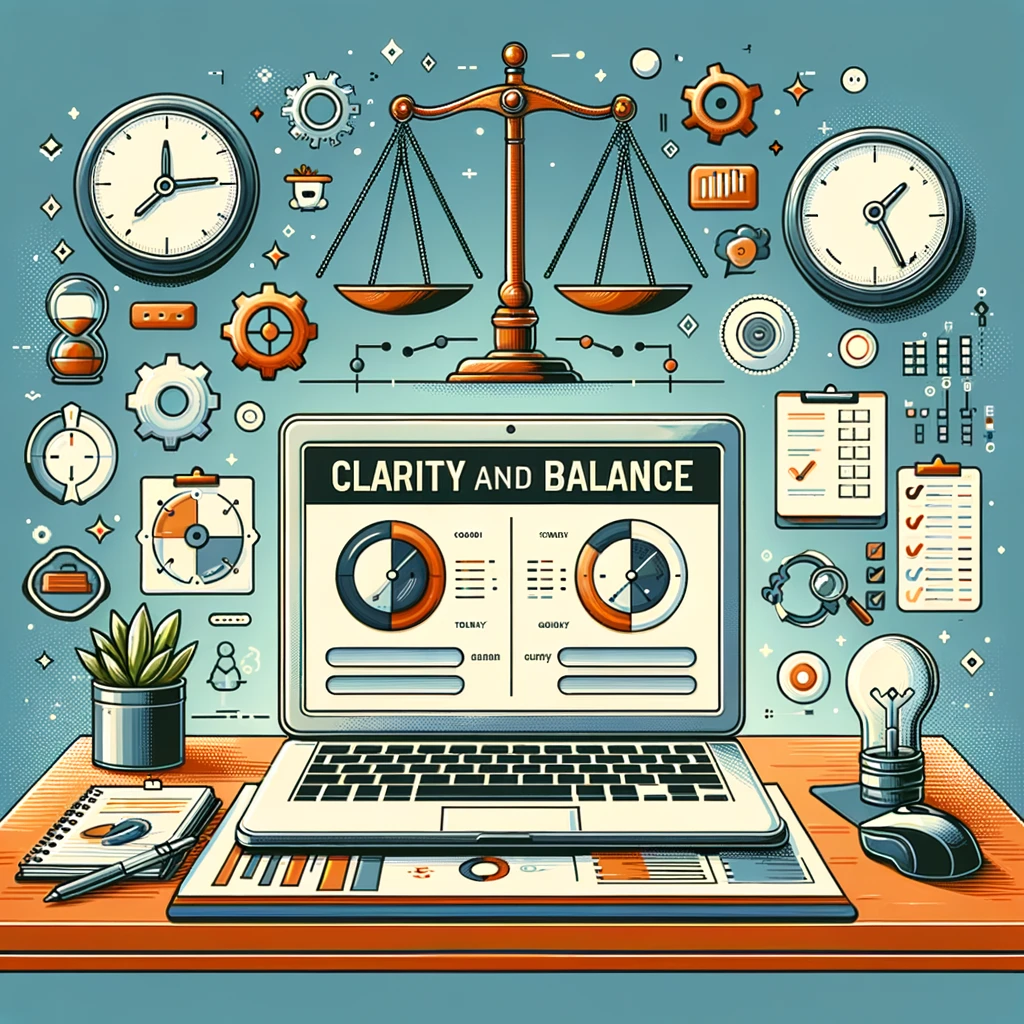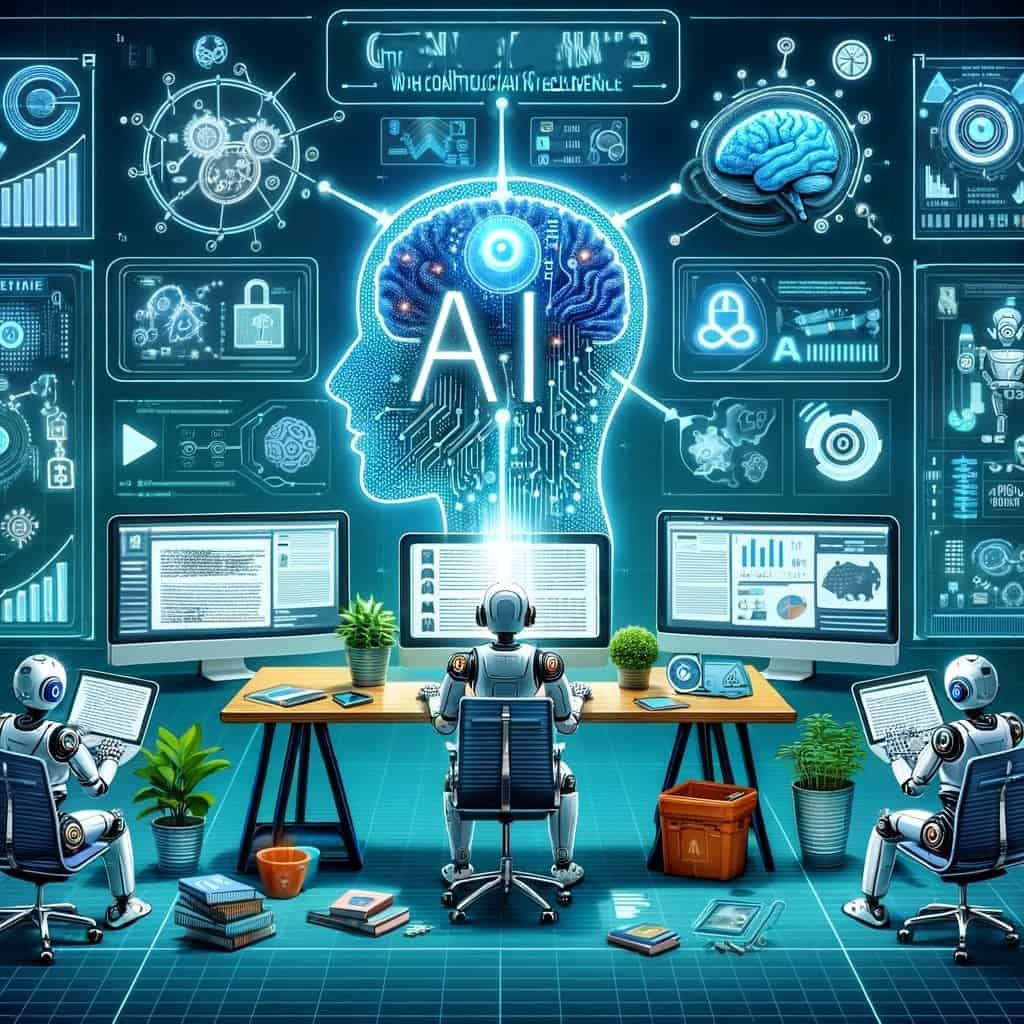Edit AI-generated content to add a human touch and enrich the overall quality, accuracy, clarity, and compliance with linguistic, legal, and ethical standards.

Introduction
AI-generated content refers to text, images, videos, or other forms of media created using artificial intelligence systems. While AI-generated content offers efficiency, it often lacks the finesse of human creativity.
The role of editing bridges the gap between machine-generated content and human expectations to achieve the desired goal in several ways.
- Accuracy
- Clarity and Coherence
- Tone and Style
- Grammar and Language Conventions
Why it Matters to Edit AI-Generated Content
Using the strengths of AI-generated content and integrating it with human skills, editing adds value by promoting clarity, accuracy, tone and depth. The coordination between AI and human editors results in content that resounds with audiences, drives attraction, and achieves the targeted objectives.
Accuracy
Edit AI-generated content to clear errors or inaccuracies produced due to misinterpretation or lack of context. Editing certifies that the content is factually accurate.
- Improved Clarity: Editing warrants that the content is coherent and understandable, which contributes to its accuracy by reducing ambiguity and confusion.
- Fact-Checking: Human editors can verify the accuracy of the information provided by AI-generated content, cross-referencing with reliable sources to secure correctness.
- Contextual Understanding: Editors can refine the content to attest it aligns with the intended context and audience, thus promoting its accuracy in conveying the intended message.
- Language Complications: AI may sometimes miss cultural references that could affect accuracy. Human editors can fill in these gaps to see that the content is culturally sensitive and accurate.
- Tone and Voice Alignment: Editing allows for adjustments in tone and voice to match the desired style, which can prevent misunderstandings and improve the accuracy of the conveyed message
Balance

AI may generate content that lacks clarity or coherence, especially when dealing with complex topics or delicate language. Edit AI-generated content to refine it and guarantee it communicates effectively to the intended audience.
- Refinement of Language: Editing AI-generated content allows for the refinement of language, ensuring that sentences are clear, concise, and grammatically correct.
- Promotion of Flow: The flow of ideas can be improved through editing, promising that the content progresses logically from one point to the next, enriching correlation.
- Elimination of Ambiguity: Editing helps to eliminate ambiguity and vagueness from the text, making it easier for readers to understand the intended message.
- Consistency: Editing enables inconsistencies in terminology, formatting, or style to be identified and corrected, contributing to overall clarity and coherence.
- Adaptation to Audience: Editing allows for the adaptation of the content to suit the needs and preferences of the target audience, which can increase comprehension and attraction.
- Correction of Errors: Edit AI-generated content to identify and correct errors, such as factual inaccuracies or misleading information, which can undermine clarity and balance.
- Polishing of Tone: Editing machine-generated content polishes it to align with the intended message and reflects the desired voice or brand identity.
Tone and style
AI may not always capture the appropriate tone or style for a given audience or purpose. Edit the AI-generated piece for adjustments to be made to tone, style, and voice to align with the intended communication objectives.
- Initial Output: AI-generated content often provides a foundation or starting point, typically empty of a specific tone or style.
- Editorial Direction: Editors guide the content towards a desired tone and style, aligning it with the brand voice or publication standards.
- Language Polishing: Editors refine language choices, adjusting vocabulary, syntax, and sentence structure to match the intended tone.
- Consistency: Pledging consistency across the piece or brand is decisive, so editors maintain a cohesive tone throughout the content.
- Audience Consideration: Editors design the tone and style to suit the target audience, making adjustments to resound better with them.
- Emotional Nuance: Editors infuse the content with emotional nuances, adding warmth, humour, or formality as required.
- Clarity and Flow: Editors promote readability by restructuring refinement and paragraphs, improving flow while maintaining the required tone.
- Cultural Sensitivity: Editors check for any culturally sensitive language or references and make appropriate changes to attest inclusivity.
- Final Polishing: The final edit involves fine-tuning details, such as word choice and punctuation, to achieve the desired tone and style smoothly.
Grammar and Language Conventions

While AI models are trained on vast amounts of text data, they may still produce grammatical errors or use language in ways that don’t conform to established conventions. Edit AI-generated content to refine and certify it adheres to linguistic norms.
- Correction of Syntax: Editing involves correcting any errors in sentence structure, certifying correlation and clarity.
- Grammar Check: AI-generated content may have grammatical mistakes such as subject-verb agreement blunders or misuse of punctuation. Editing rectifies these errors.
- Consistency in Language: Editors pledge consistency in language use throughout the content, maintaining a coherent tone and style.
- Elimination of Ambiguity: Ambiguous phrases or unclear language are revised to promote comprehension.
- Adherence to Style Guides: Editors see that the content follows specific style guides or industry standards.
- Clarity Promotion: You may involve rephrasing sentences or paragraphs to improve clarity and readability.
- Cultural Sensitivity: You may adjust language to ensure it is culturally sensitive and appropriate for the target audience.
- Plagiarism Check: Editing includes verifying the originality of your content and guarantee it does not plagiarise existing material.
- Final Quality Check: The editing process serves as a final quality check to polish your AI-generated content before publication.
Human touch
While AI can produce impressive content, it often lacks the human touch and creativity that come from human writers. Edit AI-generated content to inject creativity, personality, and unique insights that enrich the overall quality of the work.
- Quality Assurance: Human touch makes certain the final content meets quality standards by correcting errors and inconsistencies generated by AI.
- Tone and Style Adjustments: Humans can refine the tone and style of the content to better align with the intended audience or brand voice.
- Cultural Sensitivity: Humans can ascertain that the content respects cultural refinements and sensitivities, which AI might overlook.
- Contextual Understanding: Humans can add context or rephrase sentences to improve clarity, coherence, and relevance.
- Personalisation: Human editors can personalise the content to make it more engaging and relatable, catering to specific reader demographics or preferences.
- Fact-Checking and Research: Editors can verify facts and conduct additional research to upgrade the accuracy and credibility of the content.
- SEO Optimisation: Human editors can polish the content for search engines by assimilating relevant keywords and improving readability.
- Legal and Ethical Compliance: Human touch confirms that the content adheres to legal regulations and ethical guidelines, minimising the risk of misinformation or offensive material.
Tips on How to Edit AI-Generated Content

AI requires human intervention to refine its output. Edit AI-generated content by applying skills that will demand finesse, attention to detail, and an understanding of both language capabilities of the AI model used.
Understand the AI Model
It’s important to familiarise yourself with the specific AI model that generated the content. Different models have varying strengths, weaknesses, and tendencies. Edit AI-generated content by understanding the touch of the model’s output. This will help you identify common errors and areas for improvement.
- Know the Model’s Strengths and Weaknesses: Understand the capabilities and limitations of the AI model used. Recognise its tendencies to generate certain types of errors or biases.
- Review Generated Content with Model in Mind: Consider how the AI might have interpreted input data or prompts. Identify areas where the model might have misunderstood context or intent.
- Adapt Editing Schemes Accordingly: Design editing approaches to supplement the model’s strengths. Focus on refining areas where the model typically struggles.
- Use Model’s Output for Efficiency: Use AI-generated content as a starting point, saving time and effort. Direct editing efforts towards promoting coherence, clarity, and relevance.
- Verify Facts and References Independently: Double-check factual accuracy and ensure proper citation of sources. Avoid blindly relying on the AI model’s output without verification.
- Fine-tune Style and Tone: Adjust the language, tone, and style to align with the desired audience or purpose. Warrant consistency and balance throughout the content.
- Consider Ethical Implications: Check content for potential biases introduced by the AI model. Rectify any ethical concerns arising from the use of AI-generated material.
- Iterate and Improve Over Time: Gather feedback on edited content to refine editing plans. Continuously learn from editing experiences to enrich future practices.
Establish Clear Guidelines to Edit AI-Generated Content
Establish clear guidelines or style rules for the content you’re editing. This could include considerations for tone, style, grammar, and formatting. Setting clear parameters warrants consistency and coherence throughout the document.
- Set specific criteria for content quality: Clearly define what constitutes high-quality content, including factors like accuracy, readability, and relevance.
- Establish style and tone guidelines: Outline the preferred style (e.g., formal, conversational) and tone (e.g., informative, persuasive) for the content to secure consistency.
- Provide examples and templates: Offer examples of well-edited AI-generated content and templates for different types of content to serve as references for editors.
- Clarify brand voice and messaging: Attest that the edited content aligns with the brand’s voice and messaging systems to maintain brand consistency and authenticity.
- Define editing process and responsibilities: Clearly outline the steps involved in the editing process and specify the responsibilities of editors to streamline workflow and avoid confusion.
Focus on Clarity and Coherence to Edit AI-Generated Content

AI-generated content can sometimes lack clarity, particularly when transitioning between ideas or concepts. As an editor, your primary focus should be on making the content easy to understand for the intended audience. Edit AI-generated content to clarify ambiguous phrases, restructure complicated sentences, and secure a logical flow of ideas.
- Understand the Audience: Shape the content to the target audience’s level of understanding and familiarity with the subject matter.
- Simplify Language: Break down complex ideas into simpler terms to promote comprehension.
- Logical Flow: Certify that ideas progress logically from one point to another, avoiding abrupt transitions or disjointed sections.
- Consistent Tone and Style: Maintain a consistent tone and writing style throughout the content to avoid confusion or distraction.
- Eliminate Ambiguity: Clarify any ambiguous phrases or sentences that could be interpreted in multiple ways.
- Check for Jargon and Technical Terms: Explain any specialised terminology or jargon that may be unfamiliar to the audience.
Use Human Judgment to Edit AI-Generated Content
Human judgment remains essential in the editing process. Edit AI-generated content by trusting your instincts and relying on your expertise to make informed decisions about the content.
- Tone and Style Alignment: Human judgment can confirm that the tone and style of the content match the brand’s voice and guidelines, making it more attractive and effective.
- Quality Assurance: Humans can identify errors or inconsistencies that AI might miss, guaranteeing the accuracy and quality of the content.
- Adaptation to Current Events: Humans can combine current events or trends into the content, making it more relevant and timelier.
- Cultural Sensitivity: Human editors can recognise and address cultural sensitivities that AI may overlook, preventing unintentional offence or misunderstanding.
- Creativity and Originality: Humans can inject creativity and originality into the content, making it more compelling and distinctive.
- Ethical Considerations: Human editors can assess the ethical implications of the content and make necessary adjustments to guarantee it is appropriate and responsible.
- Feedback Incorporation: Human judgment allows for the incorporation of feedback from stakeholders or users, improving the overall quality and effectiveness of the content.
Proofread Thoroughly to Edit AI-Generated Content

AI models can produce errors in grammar, punctuation, and spelling. Take time to proofread the content thoroughly, checking for any mistakes or inconsistencies. Edit AI-generated content using grammar-checking tools to secure accuracy.
- Detection of Grammatical Errors: Thorough proofreading confirms that AI-generated content is free from grammatical mistakes, such as incorrect verb tense, subject-verb agreement errors, or punctuation misuse.
- Correcting Spelling Mistakes: It helps in identifying and rectifying any spelling errors that may have slipped through the AI’s algorithms, promoting accuracy and professionalism.
- Attesting Consistency: Proofreading attests consistency in language use, tone, formatting, and style throughout the content, creating a cohesive and polished piece.
- Improving Clarity and Readability: It focuses on upgrading clarity and readability by identifying awkward phrasing, ambiguous sentences, or confusing expressions, making the content more comprehensible to the audience.
- Verifying Facts and References: Thorough proofreading involves fact-checking and verifying references to ascertain the accuracy and reliability of the information presented in the AI-generated content.
- Improve Coherence: It checks for logical flow and coherence between sentences and paragraphs, affirming that the content transitions smoothly and logically from one idea to the next.
- Eliminating Redundancies and Wordiness: Proofreading helps in removing redundant phrases, unnecessary words, or overly verbose sentences, making the content concise and impactful.
- Addressing Formatting Issues: It includes checking for formatting errors, such as inconsistent spacing, font styles, or alignment, to maintain a professional and polished appearance of the content.
Conclusion
Edit AI-generated content for refinement; attest it meets the highest standards of excellence. As AI technologies evolve, editors play a primary role in shaping the future of content creation. Editing AI-generated pieces results in several benefits such as:
- Improved Clarity
- Improved Accuracy
- Customisation for Audience
- Maintaining Authenticity
Polishing AI-generated content allows for refining the language and structure to pledge the message is clear and easily understandable. Human editors can catch errors or inaccuracies that AI might overlook, certifying that the content is factually correct and reliable.
We hope this article helped you learn how to Edit AI-generated content. You may also want to see our guide on How AI is changing content marketing.
If you liked this article, then please subscribe to our YouTube Channel for video tutorials and more. You can also find us on LinkedIn, Twitter and Pinterest.




